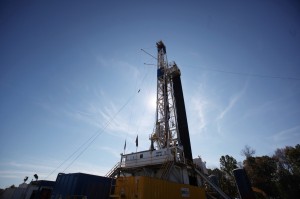 Natural gas futures were deep in the red during early trade in Europe today, after the market rallied to weather speculation and a pipeline incident on Monday. Weather patterns remain bearish, however, with big inventory builds lined up for several weeks out.
Natural gas futures were deep in the red during early trade in Europe today, after the market rallied to weather speculation and a pipeline incident on Monday. Weather patterns remain bearish, however, with big inventory builds lined up for several weeks out.
Front-month natural gas futures for settlement in October on the New York Mercantile Exchange traded at $3.908 per million British thermal units (mBtu) at 9:50 GMT, down 0.59% for the day. Prices ranged from $3.906 to $3.934 per mBtu. The contract added 1.92% on Monday.
Natural gas futures rallied on Monday, partly because of an explosion at a gas pipeline. Chevron, which operates the pipe, said that damage and supply disruption were minimal, and that it expects full operations to resume within days.
Markets had already priced in a healthy amount of shock, however, and weather patterns projecting a distant possibility of a cooler spell over the US supported futures against an immediate correction.
The possibility of any significant cooling is quite distant, though, while the incoming system is certain to limit cooling demand, and traders are struggling to find a direction.
“Very comfortable temperatures simply cover too much of the US to expect anything but much larger than normal nat gas builds,” analysts at NatGasWeather.com wrote in a note to clients today. “By this weekend, … [temperatures] will set up about as good of nat gas build weather as you can get over the US.”
Thursday will probably offer a health amount of market direction, as the US will report the weekly natural gas inventories build. The log usually triggers intense trade, with even small deviations from expected builds resulting big moves in either direction. Analysts expect a close-to-100Bcf build be reported this week, which would be the 22nd straight bigger-than-average injection, as the US log the biggest 20-week natgas build in more than 20 years.
US weather outlook
A mild cool blast will track through the Great Lakes and into the US Midwest and Northeast this week, keeping temperatures comfortable, killing much of any cooling demand and probably inducing some very light heating. Meanwhile, the South will be warming as high pressure builds, which will eventually break into the North, heating the Midwest and Northeast later on. The West Coast is experiencing a very hot few days ahead of moderate temps coming back by the weekend. Overall cooling demand across the US will be moderate-to-low for the next few days, with insignificant heating.
“By this weekend, much of the country will be experiencing temperatures in the mid-70s to mid-80s and very comfortable overnight lows,” the analysts at NatGasWeather.com wrote. “This will drive some cooling demand, but it will be limited.”
New York will set off on Tuesday with a bit of morning rain, according to AccuWeather.com, with normal temperatures, ranging from 57 to 74 degrees Fahrenheit. Except for a brief cooling on Friday, temps should remain largely average throughout the week, with some heat coming on Sunday. Chicago is still quite cold, with temps reaching no more than 62 today, 13 below the average. Readings will be little changed through to the weekend, when they will climb several degrees, before dropping back to below-average next week.
Down South, Houston is having a cloudy Tuesday, with normal temps at 74-87. The weather will be largely unchanged through to the weekend, when the clouds will scatter and it will be sunny, warm and pleasant. Over on the West Coast, Los Angeles is heading for the last day of the latest heatwave, with temperatures set to reach as high as 97 today, 14 above average. Temps will start dropping several degrees a day tomorrow, and by the weekend they will be average, though next week will probably bring more heat.
Technical support and resistance levels
According to Binary Tribune’s daily analysis, October natural gas futures’ central pivot point stands at $3.907. In case the contract penetrates the first resistance level at $3.976 per million British thermal units, it will encounter next resistance at $4.020. If breached, upside movement will probably attempt to advance to $4.089 per mBtu.
If the energy source drops below its first support level at $3.863 per mBtu, it will next see support at $3.794. If the second key support zone is breached, the power-station fuel’s downward movement may extend to $3.750 per mBtu.





